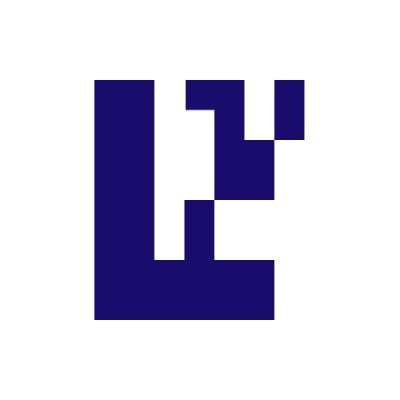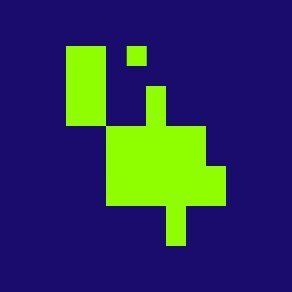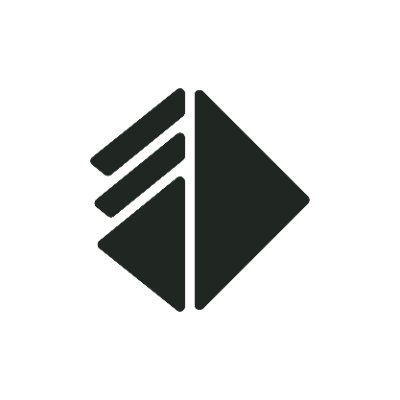Overview of 10 Eigen AVS Ecosystem Projects Worth Noting
Original Title: “The EigenLayer AVS Landscape - 10 Protocols You Should Know”
Authors: nairolf & Thor
Compiled by: Deep Tide TechFlow
On April 9, Eigenlayer announced the launch of eigenDA on the mainnet, becoming the first official Active Verification Service ( AVS ).
Introduction
EigenLayer is a project that introduces re-staking. In short, it allows anyone to leverage the existing trust and security foundation of Ethereum without having to build similar systems from scratch. In practice, users of EigenLayer will re-stake their ETH. Behind the scenes, they agree to protect another system outside of Ethereum, thereby adding some slashing conditions to their staked ETH. If they fail to protect that system, even if they correctly protect the Ethereum chain, their stake may be slashed or lost. The essence of EigenLayer is to lease Ethereum's security to other projects, becoming the first market for decentralized trust.
An effective market relies on the coexistence of sellers and buyers. Here, sellers are EigenLayer users who re-stake ETH through operators, while operators are entities that provide various services to buyers. On the other hand, buyers are Active Verification Services (AVS). The formal definition is any system that requires its own distributed verification semantics for validation. Simply put, they are projects that use EigenLayer to enhance the overall security and functionality of their networks, and AVS essentially consumes decentralized trust.
For a long time, guiding security has been a challenge for new projects, limiting innovation. EigenLayer promises to change this status quo. In the coming months, we expect a wave of AVS releases, ushering in a new era of innovation in the crypto space that we love. Let’s explore some of the most anticipated AVS.
1️⃣ EigenDA
EigenDA is EigenLayer's data availability solution and the first AVS to go live. Like other alternative data availability layers such as Celestia or NearDA, rollups utilizing EigenDA will benefit from significantly reduced transaction fees and higher throughput. EigenDA is built on scalability, security, and decentralization as its main pillars, offering a design capable of achieving 10MB/s write throughput. In contrast, Ethereum currently provides only 83.33 KB/s, which is expected to increase to 1.3 MB/s through DankSharding. EigenDA has already attracted attention from numerous projects, including Mantle, Polymer, LayerN, and Movement Labs. Additionally, RaaS projects like Caldera and AltLayer have seamlessly integrated EigenDA into their stacks, enabling developers to deploy rollups with EigenDA at the click of a button.
2️⃣ AltLayer
AltLayer has partnered with EigenLayer to develop their re-staked rollups. These rollups leverage EigenLayer's re-staking mechanism to enhance decentralization, security, interoperability, and efficiency. The re-staked rollups feature three unique AVS: 1) VITAL for decentralized verification; 2) MACH for rapid transaction qualification; 3) SQUAD for decentralized ordering. These functionalities can be integrated into existing rollups as needed. Xterio Games is the first re-staked rollup to use MACH, providing near-instant transaction confirmations, an essential feature for AI Gaming-focused projects like Xterio. With MACH, Xterio can ensure finality in under 10 seconds without compromising security.
3️⃣ Omni
Omni is a blockchain built specifically to securely connect all rollups through re-staking. With hundreds of different rollups, Ethereum users and their capital are increasingly fragmented across isolated ecosystems, leading to suboptimal states and poor user experiences. Omni aims to unify these rollups. Using Omni, developers can program across multiple Ethereum rollups in a single state. Applications built using Omni EVM can exist by default across all Ethereum rollups, allowing developers to integrate Ethereum's entire liquidity and user base into their applications without restrictions. The way Omni utilizes EigenLayer is particularly interesting; it not only uses the OMNI governance token to secure the Omni network but also combines re-staked ETH to enhance its network security. We expect dual (or even multi-asset) staking to become increasingly popular in the near future.
4️⃣ Lagrange
Lagrange is building a modular ZK co-processor that provides trustless off-chain computation. When developers perform extensive on-chain calculations, such as querying the number of Pudgy Penguins held by a certain address, they incur extremely high fees. With the Lagrange ZK co-processor, this data becomes more accessible and cost-effective. In practice, queries are executed off-chain, zk proofs are generated, and verified within contracts. This ultimately enables the development of more complex, data-rich applications, such as games. Since Lagrange is designed to be chain-agnostic, it plays an important role in cross-chain interoperability, and the integration of EigenLayer enhances the security of these interactions.
5️⃣ Aligned Layer
Aligned Layer is the first general verification layer built on EigenLayer for Ethereum. In practice, rollups send their proofs to Aligned Layer instead of Ethereum. Aligned Layer verifies these proofs, aggregates them into a whole, and then sends them to Ethereum. Notably, what is stored on Ethereum is not the proof itself, but the verification results executed by Aligned Layer. This approach is cheaper, offers better interoperability, and most importantly, allows developers to use any proof system, even if it is incompatible with Ethereum. By accepting various proof systems, developers can now choose the proof system that best suits their needs, without worrying about Ethereum compatibility or cost issues in terms of speed, proof size, development ease, or security considerations. While verification results are published to Ethereum, the actual proofs are published to data availability layers like Celestia or eigenDA. Regarding the use of Aligned Layer for EigenLayer, they will utilize a dual staking model with re-staked ETH and future governance tokens, employing re-staking to ensure the security of the entire verification process.
6️⃣ Hyperlane
Hyperlane is the first interoperability layer that allows permissionless connections between any blockchains. Its main competitive advantage lies in its permissionless nature. Unlike cross-chain messaging protocols like Wormhole that require your chain/rollup to be supported, Hyperlane allows you to use its services without permission. Specifically, this means you only need to deploy a few smart contracts for your chain to connect it to other chains using Hyperlane. Hyperlane announced the development of an EigenLayer AVS back in February 2023, enabling cross-chain application developers to securely send messages from Ethereum to other chains supported by Hyperlane.
7️⃣ Witness Chain
Witness Chain claims to be the DePIN coordination layer that unifies isolated DePIN economies. In practice, Witness Chain enables DePIN projects to transform unverified physical attributes (such as their physical location, network capacity, etc.) into verified digital proofs. These proofs can later be authenticated/questioned and used through different applications or the DePIN chain itself to build new products and services. This will ultimately allow DePINs to connect with each other, establishing an end-to-end decentralized center and infrastructure supply chain. WitnessChain ensures the state verification process of over 20 DePIN projects through EigenLayer Operators.
8️⃣ Eoracle
Eoracle is a modular and programmable oracle network. Oracle networks are the means by which off-chain data is brought on-chain. Whether it’s NBA scores, weather data, or stock prices, blockchains cannot access this data without reliable oracles. Eoracle utilizes EigenLayer to build an oracle network, or a network composed of individuals who view data, reach consensus on its accuracy, and record it on-chain. Eoracle will leverage EigenLayer's Operators to perform this task, rather than building this network of people or nodes themselves, making it interesting to see how this Ethereum-native solution competes with Chainlink and others.
9️⃣ Drosera
Drosera is an event response protocol that utilizes covert security strategies to contain and mitigate vulnerabilities. In short, Drosera acts as a security marketplace where DeFi protocols can set a "trap" or security threshold to determine whether an emergency response should be triggered. Once emergency conditions are met, operators will execute on-chain emergency measures based on a consensus mechanism. For example, Nomad might have set up a Drosera trap that could detect 30% of total value locked (TVL) being illegally transferred within the time of a block, thus preventing further loss of funds during its $190 million asset theft incident.
🔟 Ethos
Ethos provides a one-stop solution for Cosmos chains, enabling them to seamlessly leverage the security of re-staked ETH. Building new Cosmos chains incurs certain costs, including establishing a validator network. Projects must persuade validators and users to hold and stake native tokens. To overcome this barrier, Ethos has established Guardians Chain, an L1 validated by EigenLayer's Operators, serving as a security coordination layer. Projects hoping to build validator sets for their L1 can hire these Guardians as virtual validators, thereby benefiting from Ethereum's security. You can think of this process as a diversion: Ethos gains Ethereum's security through EigenLayer, while Ethos provides security for any Cosmos L1 that wishes to avoid building its own validator set.
Conclusion
EigenLayer AVS offers limitless possibilities. This article has only touched on the shallow goals they can achieve, and we look forward to more innovations in the future.














